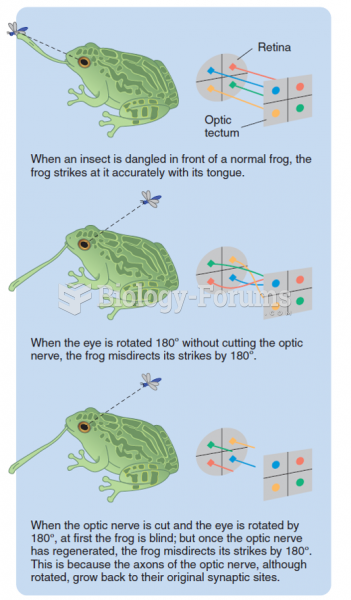|
|
|
Blood is approximately twice as thick as water because of the cells and other components found in it.
People about to have surgery must tell their health care providers about all supplements they take.
The most destructive flu epidemic of all times in recorded history occurred in 1918, with approximately 20 million deaths worldwide.
People who have myopia, or nearsightedness, are not able to see objects at a distance but only up close. It occurs when the cornea is either curved too steeply, the eye is too long, or both. This condition is progressive and worsens with time. More than 100 million people in the United States are nearsighted, but only 20% of those are born with the condition. Diet, eye exercise, drug therapy, and corrective lenses can all help manage nearsightedness.
The Romans did not use numerals to indicate fractions but instead used words to indicate parts of a whole.







